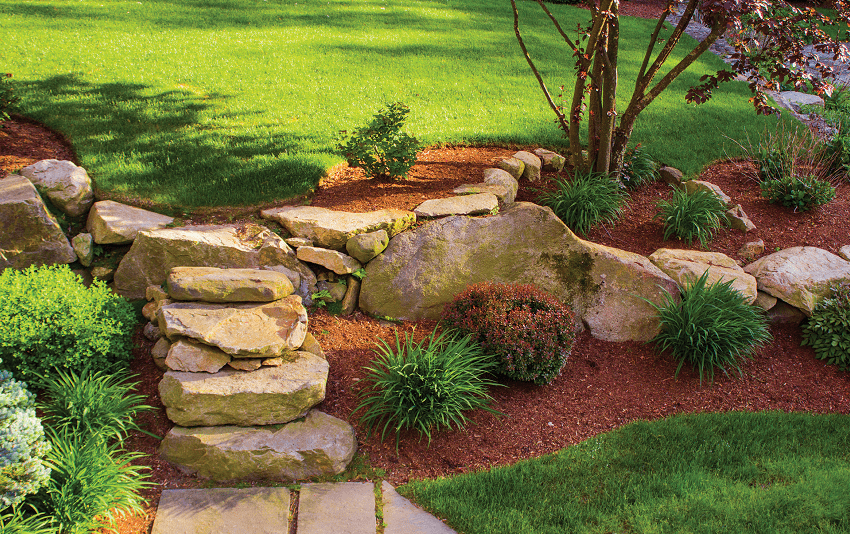We’ve all seen garden beds that have been made more attractive by a fresh dressing of mulch. Besides aesthetics there are many reasons to use mulch. An important reason is the reduction of water loss by evaporation and runoff on the soil surface. Also, the temperature on the soil surface and immediately beneath is moderated with the use of most mulch. Weeds can be effectively controlled with mulch if applied in such a way as to stop seed germination and/or smother existing weed plants.
Mulch may also help prevent flower damage by late spring frosts or help to maintain clean fruit or strawberries, tomatoes and other vegetables. Finally, it protects trees and shrubs from string trimmers when a mulched area is defined around the plant’s trunk.
There are two categories of mulch – organic and inorganic. Organic mulch helps renovate or preserve the granular condition of a soil. This in turn influences the absorption and percolation of water into the soil and the general health and vigor of plant roots. Organic mulches are usually by-products derived from plant parts. Since they are of organic origin they decompose and therefore ultimately affect the composition of the soil where they are used. In most cases this is good for the plants living in the soil. However, in some cases the soil is changed in a way that is detrimental to plant growth. Fertilizer deficiency, particularly nitrogen starvation, can develop when organic mulches like sawdust are applied.
Be aware that organic mulches may also harbor undesirables, such as weed seeds or herbicides and related compounds. Examples of organic mulches are: grass clippings, straw, compost, bark and wood chips, and manure.

Materials grouped as inorganic mulches are not derived from plant materials, although they do posses many of the desirable qualities found in the organic mulches. They do not increase soil organic matter, but temperature fluctuations are reduced in many cases. Soil erosion may be controlled and generally the soil condition is preserved as it was before the application of the mulch. Inorganic mulches can be very attractive additions to the landscape, particularly river rock, washed gravel and brick chips when used in good taste. Inorganic mulches usually last considerably longer than organic mulches.
How much mulch to apply is determined by the material used and the primary reason for mulching. In general, an organic material used for preventing weed growth should be applied two or three inches in depth. This will be adequate to smother most annual weed seedlings and some perennials. More than three inches can be detrimental to your desired plant’s growth. Keep the mulch away from the base of plants to prevent disease and rodent problems.
Mulches applied primarily for decorative purposes, such as pea gravel and bark chunks, need only cover the soil with a single layer. Keep this mulch away from the base of plants to prevent abrasion problems.
Mulch material has many benefits both for creating a healthy environment for plants and adding beauty to your landscape. A little research prior to mulch selection and application can pay big dividends.
— Kelly Jackson, Christian County Extension Agent





